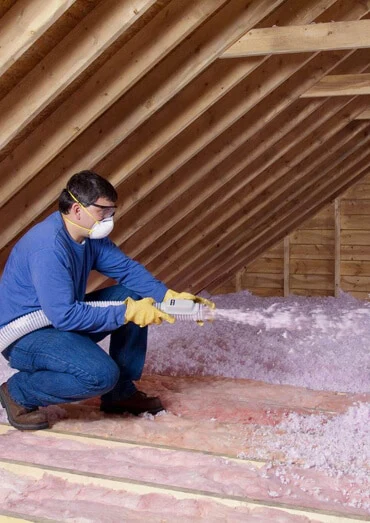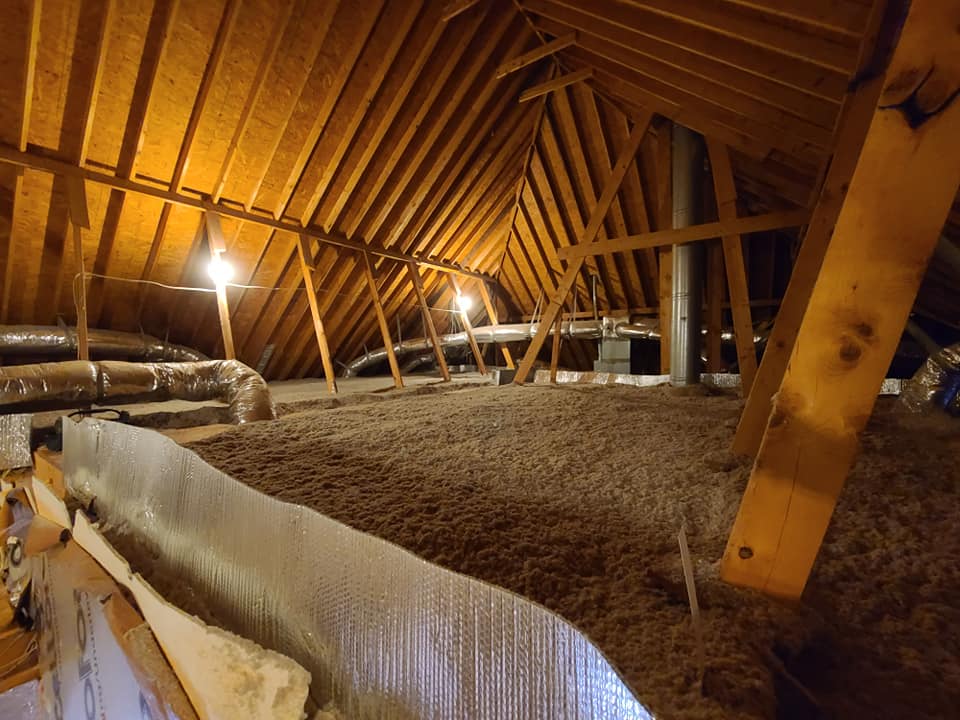Expert Tips for Enhancing Your Home with Attic Insulation DFW
Expert Tips for Enhancing Your Home with Attic Insulation DFW
Blog Article
Discover the Different Sorts Of Attic Insulation and Their Unique Advantages for Your Home's Energy Efficiency

Fiberglass Insulation
Fiberglass insulation is just one of one of the most commonly made use of materials for attic insulation due to its exceptional thermal performance and cost-effectiveness. Made up of little glass fibers, this material properly traps air, producing an insulating barrier that aids maintain constant indoor temperatures. Its high R-value per inch makes it specifically efficient at standing up to warmth transfer, which is essential for energy preservation in homes.
Setup of fiberglass insulation is relatively uncomplicated, usually offered in batts or loose-fill types, accommodating different attic setups. In addition, it is non-combustible and resistant to moisture, lowering the threat of mold development. This resilience adds to its durability, making fiberglass a sensible lasting investment for property owners.
Additionally, fiberglass insulation is typically manufactured from recycled products, which enhances its eco-friendliness. The material can additionally add to soundproofing, lessening noise transfer between rooms. While it is important to put on safety gear throughout setup to avoid irritability from the fibers, the overall benefits of fiberglass insulation, including energy savings and ecological considerations, make it a preferred selection for boosting attic room performance and advertising a comfy living setting.
Spray Foam Insulation
Spray foam insulation is a very effective choice for attic room insulation, recognized for its premium air securing and thermal efficiency. This innovative insulation material is composed of a mix of isocyanate and polyol resin, which, when incorporated, broadens swiftly to fill up spaces and dental caries in the attic space. Its capability to follow various surfaces makes sure a continuous barrier against air leakages, considerably decreasing warmth loss throughout colder months and heat gain during warmer seasons.
Among the vital benefits of spray foam insulation is its high R-value per inch, which suggests it offers excellent thermal resistance in a fairly thin application. This is particularly useful in attic rooms where room is usually minimal. Additionally, spray foam can assist lessen wetness buildup, reducing the danger of mold and mildew growth, which can be harmful to both the framework and interior air quality.
While the preliminary price of spray foam insulation may be greater than standard choices, its long-lasting power cost savings, combined with increased convenience and boosted home worth, make it a beneficial financial investment for homeowners seeking boosted energy performance. Attic Insulation DFW. In general, spray foam insulation sticks out as a reliable solution for maximizing attic insulation
Cellulose Insulation

Cellulose insulation is a popular option for attic room insulation, primarily composed of recycled paper products treated with fire retardants. This eco-friendly option is understood for its exceptional thermal efficiency, efficiently decreasing heat transfer in both summer season and wintertime months. The dense make-up of cellulose enables it to fill up spaces and spaces in attic room spaces, providing a smooth barrier against air leaks.
One of the significant benefits of cellulose insulation is its capacity to resist mold and mildew and pests, owing to the fire resistant therapies used during manufacturing. Additionally, it boasts a high R-value per inch, which equates right into premium energy effectiveness. House owners can expect reduced heating and air conditioning costs as a result of boosted insulation.
Installation is typically completed with blowing loosened cellulose into the desired area, enabling for a efficient and fast process. This technique additionally minimizes disruption to the existing structure. Cellulose insulation has a fairly low environmental effect, as its production procedure utilizes recycled materials, adding to sustainable structure methods.
Rock Wool Insulation
Among the numerous choices for attic insulation, rock wool, also called mineral wool, attracts attention due to its remarkable thermal and acoustic efficiency. Made from all-natural or recycled products, rock wool is created by thawing rock and rotating it into fibers, causing an item that provides outstanding insulation homes.
Among the substantial advantages of rock woollen insulation is its high R-value, which indicates its efficiency in standing up to warm flow. This characteristic not only improves energy effectiveness but additionally adds to keeping a comfy indoor temperature year-round. In addition, rock woollen is inherently fireproof, making it a more secure choice for homes as it can hold up against high temperature levels without melting or releasing harmful fumes.
Moreover, rock woollen insulation stands out in soundproofing capabilities, successfully reducing noise site link transmission between rooms and from outside sources. This makes it a suitable option for home owners looking for a tranquil living environment. Additionally, rock wool is moisture-resistant, helping to avoid mold and mildew growth and maintaining the architectural integrity of the attic room room. Overall, rock wool insulation offers a thorough solution for enhancing energy effectiveness, safety, and convenience in domestic setups.
Glowing Obstacle Insulation
Radiant obstacle insulation serves as an effective option for minimizing warm transfer in attics, especially in warmer climates. This kind of insulation works by showing glowing warm far from living areas, therefore minimizing the quantity of warm that enters a home throughout warm climate - Attic Insulation DFW. Normally made up of a highly reflective material, such as light weight aluminum foil, glowing obstacles are mounted in attics, dealing with the roofing, where they can intercept incoming warm from the sunlight
The primary advantage of glowing barrier insulation is its ability to reduced cooling prices. By mirroring warm instead of absorbing it, radiant barriers can aid keep a much more steady indoor temperature level, minimizing the workload on cooling systems. This effectiveness converts into reduced power bills and enhanced convenience for homeowners.
In addition to power savings, radiant barriers can likewise add to enhanced indoor air top quality. By decreasing warmth buildup, they aid reduce moisture degrees, which can protect against mold development and enhance total air flow. When set up properly, radiant obstacle insulation can be a very useful enhancement to any kind of energy-efficient home, making it a worthwhile consideration for house owners wanting to improve their attic insulation technique.
Verdict
In conclusion, understanding the various kinds of attic room insulation-- fiberglass, spray foam, cellulose, rock woollen, and glowing barriers-- enables house owners to make educated choices regarding energy efficiency. Each insulation kind offers distinct advantages, such as superior thermal resistance, wetness monitoring, and audio depletion. By selecting the appropriate insulation material, substantial reductions in energy prices can be accomplished, in addition to improvements in indoor convenience. Eventually, the best choice adds to a more lasting living setting and advertises total power preservation.

In conclusion, recognizing the numerous kinds of attic room insulation-- fiberglass, spray foam, cellulose, rock woollen, and radiant obstacles-- makes it possible for homeowners to make enlightened find here decisions regarding energy effectiveness.
Report this page